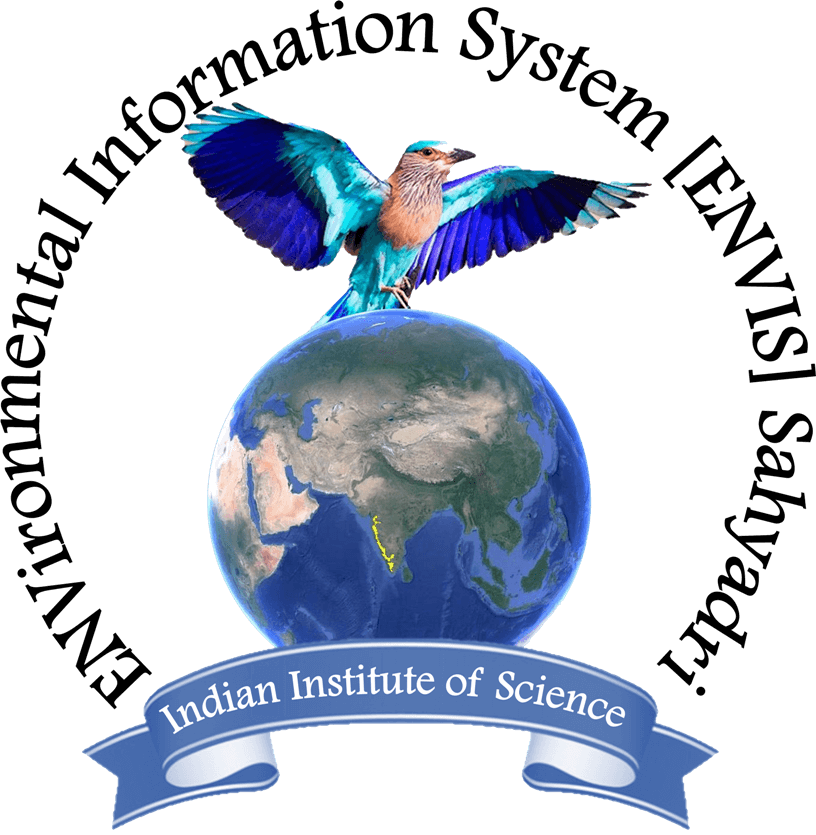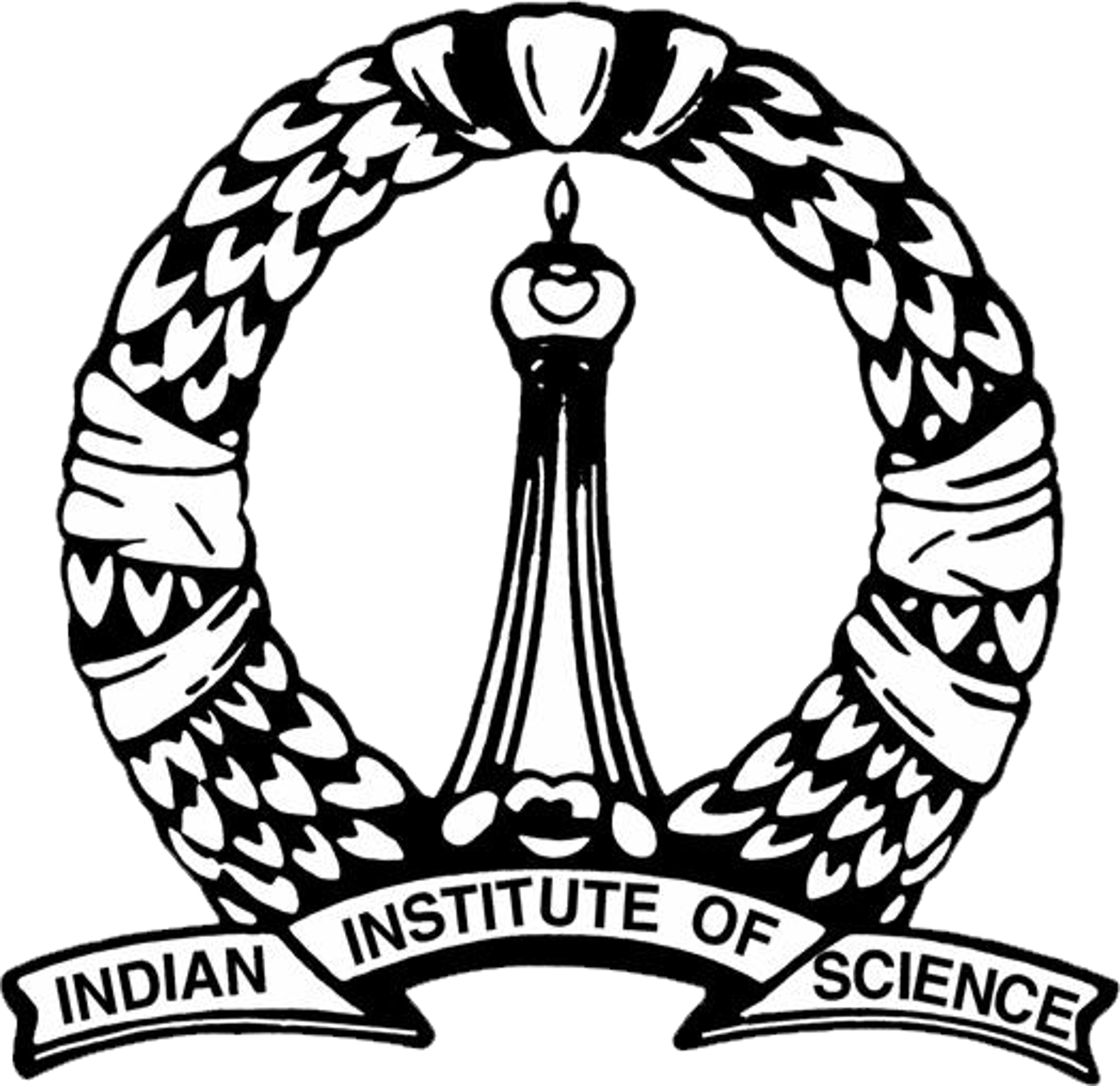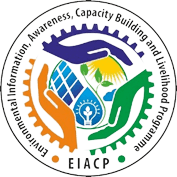-
Abdusalam, Y.H., Sujaul, I.M., Karim, M.A.,
Salah, M.G., Ali, M.I., & Ramli, N.I.
(2019). Assessment of water quality in the
vicinity of Chini lake, Malaysia.
Bangladesh Journal of Botany, 48(4), 1037-1046.
-
Ahmad, T., Gupta, G., Sharma, A., Kaur, B.,
Alsahli, A.A., & Ahmad, P. (2020).
Multivariate statistical approach to study
spatiotemporal variations in water quality
of a Himalayan urban fresh water lake.
Water, 12(9), 2-15. doi:10.3390/w12092365
-
Alam, M.S., & Aslam, R. (2020).
Extrusion for the Production of Functional
Foods and Ingredients.
Innovative Food Processing
Technologies, 22-35.
-
APHA, AWWA, WEF. (2005). Standard methods
for the examination of water and wastewater.
21st Edition. D.C., Washington: American
Public Health Association.
-
Atkore, V.M., Sivakumar, K., &
Johnsingh, A.J.T. (2011). Patterns of
diversity and conservation status of
freshwater fishes in the tributaries of
River Ramganga in the Shiwaliks of the
Western Himalaya.
Current science, 731-736.
-
Avvannavar, S. M., & Shrihari, S.
(2008). Evaluation of water quality index
for drinking purposes for river Netravathi,
Mangalore, South India.
Environmental Monitoring and
Assessment, 143(1-3), 279-290. DOI
10.1007/s10661-007-9977-7
-
Bahar, M.M., Ohmori, H., & Yamamuro, M.
(2008). Relationship between river water
quality and land use in a small river basin
running through the urbanizing area of
Central Japan.
Limnology, 9(1), 19-26. DOI
10.1007/s10201-007-0227-z
-
Barakat, A., El Baghdadi, M., Rais, J.,
Aghezzaf, B., & Slassi, M. (2016).
Assessment of spatial and seasonal water
quality variation of Oum Er Rbia River
(Morocco) using multivariate statistical
techniques.
International Soil and Water
Conservation Research, 4(4), 284-292.
http://dx.doi.org/10.1016/j.iswcr.2016.11.002
-
Barik, N.K. (2017). Freshwater fish for
nutrition security in India: Evidence from
FAO data.
Aquaculture Reports, 7, 1-6.
http://dx.doi.org/10.1016/j.aqrep.2017.04.001
-
Bassi, N., Kumar, M.D., Sharma, A., &
Pardha-Saradhi, P. (2014). Status of
wetlands in India: A review of extent,
ecosystem benefits, threats and management
strategies.
Journal of Hydrology: Regional
Studies, 2, 1-19.
http://dx.doi.org/10.1016/j.ejrh.2014.07.001
-
Bhakta, D., Meetei, W.A., Vaisakh, G.,
Kamble, S., Das, S.K., & Das, B.K.
(2019). Finfish diversity of Narmada estuary
in Gujarat of India.
In Proceedings of the Zoological
Society, 72(3), 257–262.
https://doi.org/10.1007/s12595-018-0263-1
-
Bhatnagar, A., & Devi, P. (2013). Water
quality guidelines for the management of
pond fish culture.
International Journal of Environmental
Sciences, 3(6), 1980 - 2009.
-
Bora, M., & Goswami, D.C. (2017). Water
quality assessment in terms of water quality
index (WQI): Case study of the Kolong River,
Assam, India.
Applied Water Science, 7(6), 3125-3135. DOI
10.1007/s13201-016-0451-y
-
Borah, D.K., & Das, J. (2020).
Ichthyofaunal diversity of Jinari river in
Goalpara, Assam, India.
CIBTech Journal of Zoology. 9, 30-35.
-
Bose, R., Bose, A.K., Das, A.K., Parashar,
A., & Roy, K. (2019). Fish diversity and
limnological parameters influencing fish
assemblage pattern in Chambal River Basin of
Madhya Pradesh, India.
Proceedings of the National Academy of
Sciences, India Section B: Biological
Sciences, 89(2), 461-473.
https://doi.org/10.1007/s40011-017-0958-5
-
Calijuri, M.C., Dos Santos, A.C.A., &
Jati, S. (2002). Temporal changes in the
phytoplankton community structure in a
tropical and eutrophic reservoir (Barra
Bonita, SP—Brazil).
Journal of Plankton Research, 24(7), 617-634.
-
Chabuk, A., Al-Madhlom, Q., Al-Maliki, A.,
Al-Ansari, N., Hussain, H.M., & Laue, J.
(2020). Water quality assessment along
Tigris River (Iraq) using water quality
index (WQI) and GIS software.
Arabian Journal of Geosciences, 13(14), 1-23.
-
Chatterjee, M., Ghosh, P., Ramdas, L.,
& Chakrabarti, R. (2015). Isotopic and
geochemical characterization of invader
tilapia fishes from water bodies of West
Bengal and Karnataka, India.
Environmental Monitoring and
Assessment, 187(11), 1-12. DOI
10.1007/s10661-015-4929-0
-
Chattopadhyay, N.R. (2017). Reproductive
cycle, maturation, and spawning: A practical
guide for hatcheries.
Induced Fish Breeding, 15-42.
-
Davraz, A., Varol, S., Sener, E., Sener,
S., Aksever, F., Kırkan, B., & Tokgözlü,
A. (2019). Assessment of water quality and
hydrogeochemical processes of Salda alkaline
lake (Burdur, Turkey).
Environmental Monitoring and
Assessment, 191(11), 1-18.
https://doi.org/10.1007/s10661-019-7889-y
-
Devi, W.S., Singh, K., & Meitei, N.
(2015). Assessment of water quality
index of Nambol River, Manipur, India.
Universal Journal of Environmental
Research & Technology, 5(3), 165-172.
-
Diamantini, E., Lutz, S.R., Mallucci, S.,
Majone, B., Merz, R., & Bellin, A.
(2018). Driver detection of water quality
trends in three large European river basins.
Science of the Total Environment, 612, 49-62.
http://dx.doi.org/10.1016/j.scitotenv.2017.08.172
-
Ekubo, A.T., & Abowei, J.F.N. (2011).
Review of some water quality management
principles in culture fisheries.
Research Journal of Applied Sciences,
Engineering and Technology, 3(12), 1342-1357.
-
El-Serehy, H.A., Abdallah, H.S., Al-Misned,
F.A., Al-Farraj, S.A., & Al-Rasheid,
K.A. (2018). Assessing water quality and
classifying trophic status for
scientifically based managing the water
resources of the Lake Timsah, the lake with
salinity stratification along the Suez
Canal.
Saudi Journal of Biological Sciences, 25(7), 1247-1256.
https://doi.org/10.1016/j.sjbs.2018.05.022
-
Gupta, N., Sivakumar, K., Mathur, V.B.,
& Chadwick, M.A. (2015). Terrestrial
protected areas and managed reaches conserve
threatened freshwater fish in Uttarakhand,
India.
Parks, 21(1), 89-101.
-
Haidary, A., Amiri, B.J., Adamowski, J.,
Fohrer, N. and Nakane, K., 2013. Assessing
the impacts of four land use types on the
water quality of wetlands in Japan.
Water Resources Management, 27(7), 2217-2229. DOI
10.1007/s11269-013-0284-5
-
http://fishbase.org
-
https://www.iucnredlist.org/
-
Huang, J., Zhan, J., Yan, H., Wu, F., &
Deng, X. (2013). Evaluation of the impacts
of land use on water quality: a case study
in the Chaohu Lake basin.
The Scientific World Journal,
Article, 1-7.
http://dx.doi.org/10.1155/2013/329187
-
Islam, M.M., Lenz, O.K., Azad, A.K., Ara,
M.H., Rahman, M., & Hassan, N. (2017).
Assessment of spatio-temporal variations in
water quality of Shailmari River, Khulna
(Bangladesh) using multivariate statistical
techniques.
Journal of Geoscience and Environment
Protection, 5(1),1-26.
http://dx.doi.org/10.4236/gep.2017.51001
-
Jayaram, K.C. (1999). The freshwater fishes
of the Indian Region. Narendra Publishing
House, Delhi- 551.
-
Jayasankar, P. (2018). Present status of
freshwater aquaculture in India-A review.
Indian Journal of Fisheries, 65(4), 157-165.
-
Jindal, R., & Sharma, C. (2011).
Studies on water quality of Sutlej River
around Ludhiana with reference to
physicochemical parameters.
Environmental Monitoring and
Assessment, 174(1), 417-425. DOI
10.1007/s10661-010-1466-8
-
Kamble, P., & Ganesh, C.B. (2016).
Ichthyofaunal diversity status in Kelageri Lake,
Dharwad, Karnataka state.
International Journal of Fisheries and
Aquatic Studies, 4(4), 343-346.
-
Kamboj, N., & Kamboj, V. (2019). Water
quality assessment using overall index of
pollution in riverbed-mining area of
Ganga-River Haridwar, India.
Water Science, 33(1), 65-74.
https://doi.org/10.1080/11104929.2019.1626631
-
Kumar Sarkar, U., Kumar Pathak, A., Kumar
Tyagi, L., Mohan Srivastava, S., Prakash
Singh, S., & Kumar Dubey, V. (2013).
Biodiversity of freshwater fish of a
protected river in India: comparison with
unprotected habitat.
Revista de Biologia Tropical, 61(1), 161-172.
-
Kumar, A.B. (2000). Exotic fishes and
freshwater fish diversity.
Zoos’ Print Journal, 15(11), 363-367.
-
Kumar, D., Karthik, M., & Rajakumar, R.
(2017). Study of seasonal water quality
assessment and fish pond conservation in
Thanjavur, Tamil Nadu, India.
Journal of Entomology and Zoology
Studies, 5, 1232-1238.
-
Kumar, R., Grover, A.S., & Wats, M.
(2018). Assessment of water quality status
of lakes in Haryana, India.
International Journal of Recent
Scientific Research, 9(7), 27831-27835.
-
Liu, C.W., Lin, K.H., & Kuo, Y.M.
(2003). Application of factor analysis in
the assessment of groundwater quality in a
Blackfoot disease area in Taiwan.
Science of the Total Environment, 313, 77-89.
-
Liu, J., Zhang, D., Tang, Q., Xu, H.,
Huang, S., Shang, D., & Liu, R. (2021).
Water quality assessment and source
identification of the Shuangji River (China)
using multivariate statistical methods.
PloS One, 16(1), 1-19.
-
Mahapatra, B.K., Sarkar, U.K., & Lakra,
W.S. (2014). A Review on status, potentials,
threats and challenges of the fish
biodiversity of West Bengal.
Journal of Biodiversity, Bioprospecting
and Development, 2(1), 1-10.
doi:10.4172/2376-0214.1000140
-
Makori, A.J., Abuom, P.O., Kapiyo, R.,
Anyona, D.N., & Dida, G.O. (2017).
Effects of water physico-chemical parameters
on tilapia (Oreochromis niloticus) growth in earthen ponds in Teso North
Sub-County, Busia County.
Fisheries and Aquatic Sciences, 20(1), 1-10. DOI
10.1186/s41240-017-0075-7
-
Mamun, M., Kim, J.Y., & An, K.G.
(2021). Multivariate statistical analysis of
water quality and trophic state in an
artificial dam reservoir.
Water, 13(2), (1-18).
-
Mishra, A. (2010). Assessment of water
quality using principal component analysis:
a case study of the river Ganges.
Journal of Water Chemistry and
Technology, 32(4), 227-234.
-
Mohamed, A.R.M., & Al-Wan, S.M.
(2020). Biological aspects of an
invasive species of Oreochromisniloticus
in the Garmat Ali River, Basrah, Iraq.
Journal of Agriculture and
Veterinary Science,
13(2), 15-26.
-
Naskar, M., Roy, K., Karnatak, G., Nandy,
S.K., & Roy, A. (2018). Quantifying
climate change induced threats to wetland
fisheries: a stakeholder-driven approach.
Environment, Development and
Sustainability, 20(6), 2811-2830.
https://doi.org/10.1007/s10668-017-0018-6
-
Nayaka, B.M.S. (2018). Ichthyofaunal diversity
of Mallasandra Lake of Tumakuru, Karnataka
State, India.
National Journal of Multidisciplinary
Research and Development, 3(2), 15-17.
-
Ninawe, A.S., Indulkar, S.T., & Amin,
A. (2018). Impact of climate change on
fisheries.
In Biotechnology for Sustainable
Agriculture:
Emerging Approaches and Strategies,
Elsevier, 257-280.
https://doi.org/10.1016/B978-0-12-812160-3.00009-X
-
Nkpondion, N.N., Ugwumba, O.A., &
Esenowo, I.K. (2016). The toxicity effect of
detergent on enzymatic and protein
activities of African Mud Catfish (Clarias gariepinus). Journal of Environmental &
Analytical Toxicology, 6(361), 2161-0525.
-
Ogundiran, M.A., Fawole, O.O., Adewoye,
S.O., & Ayandiran, T.A. (2010).
Toxicological impact of detergent effluent
on juvenile of African Catfish
(Clariasgariepinus) (Buchell 1822).
Agriculture and Biology Journal of
North America, 1(3), 330-342.
-
Okoliegbe, I.L., Ariole, C.N., &
Okpokwasili, G.C. (2020). Physicochemical
properties of concrete pond water used for
Clarias gariepinus
aquaculture.
Nature and Science, 18(7), 48-55. doi:10.7537/mars
nsj180720.07.
-
Pinto, F.P., Tormam, M.F., Bork, C.K.,
Guedes, H.A.S., & Silva, L.B.P.D.
(2020). Seasonal assessment of water quality
parameters in Mirim Lagoon, Rio Grande do
Sul State, Brazil.
Anais da Academia Brasileira de
Ciências, 92(3), 1-15.
-
Prasad, S.N., Ramachandra, T.V., Ahalya,
N., Sengupta, T., Kumar, A., Tiwari, A.K.,
Vijayan, V.S., & Vijayan, L., (2002).
Conservation of wetlands of India - A
review.
Tropical Ecology, 43(1), 173-186.
-
Priyamvada, D., Sirisha D., & Gandhi N.
(2013). Study on the quality of water and
soil from fish pond in around Bhimavaram
West Godavari district, A.P., INDIA.
International Research Journal of
Environment Sciences, 2(1), 58-62.
-
Qureshimatva, U.M., Maurya, R.R., Gamit,
S.B., Patel, R.D., & Solanki, H.A.,
2015. Determination of physicochemical
parameters and water quality index (WQI) of
Chandlodia Lake, Ahmedabad, Gujarat, India.
Journal of Environmental &
Analytical Toxicology, 5(4), 1-6. DOI:
10.4172/2161-0525.1000288
-
Rajbongshi, M.K., Das, J., & Dutta,
R.K. (2016). Water quality assessment of
capture and culture fishery in Barpeta
district, Assam, India.
International Journal of Fisheries and
Aquatic Studies, 4(5), 516-520.
-
Rajkumar, K., Ojha, M.L., Saini, V.P.,
& Sharma, S.K. (2018). Effect of water
hardness on survival and growth of
Labeo rohita
(Hamilton) fry.
Journal of Entomology and Zoology
Studies, 6(5), 2337-2341.
-
Ramachandra T.V., Sincy V., & Asulabha K.S.
(2020b). Efficacy of rejuvenation of lakes in
Bengaluru, India.
Green Chemistry & Technology Letters, 6(1), 14-26.
doi.org/10.18510/gctl.2020.613
-
Ramachandra, T.V., & Aithal, B.H.
(2016). Bengaluru's reality: Towards
unlivable status with unplanned urban
trajectory.
Current Science, 110(12), 2207-2208
-
Ramachandra, T.V., Asulabha, K.S., &
Lone, A.A. (2014). Nutrient enrichment and
proliferation of invasive macrophytes in
urban lakes.
Journal of Biodiversity, 5(1-2), 33-44.
-
Ramachandra, T.V., Sincy, V., Asulabha,
K.S., Mahapatra, D.M., Bhat, S.P. &
Aithal, B.H. (2018). Optimal treatment
of domestic wastewater through
constructed wetlands.
Journal of Biodiversity,
9(1-2), 81-102. DOI:
10.31901/24566543.2018/09.1-2.077
-
Ramachandra, T.V., Sudarshan, P., Vinay,
S., Asulabha, K.S., & Varghese, S.,
(2020a). Nutrient and heavy metal
composition in select biotic and abiotic
components of Varthur wetlands, Bangalore,
India.
SN Applied Sciences, 2(8), 1-14.
-
Ramachandra, T. V., Vinay, S., Asulabha, K.
S., Sincy V., Bhat, S. P., Mahapatra, D.M.,
& Aithal, B. H. (2017). Rejuvenation
blueprint for lakes in Vrishabhavathi
Valley.
ENVIS Technical Report 122, Energy & Wetlands Research Group,
CES, Indian Institute of Science, Bangalore,
2017.
-
Ramanujam, M.E., Devi, K.R., & Indra,
T.J. (2014). Ichthyofaunal diversity of the
Adyar Wetland complex, Chennai, Tamil Nadu,
Southern India.
Journal of Threatened Taxa, 6(4): 5613–5635;
http://dx.doi.org/10.11609/JoTT.o2905.5613-35
-
Ramulu, N.K., & Benarjee, G. (2013).
Fish species diversity of Nagaram Tank of
Warangal, Andhra Pradesh.
Journal of Environmental Science,
Toxicology and Food Technology, 3(4), 14-18.
-
Rao, J.C.S., Raju, C.S., & Simhachalam,
G. (2014). Biodiversity and conservation
status of fishes of River Sarada,
Visakhapatnam District, Andhra Pradesh,
India.
Research Journal of Animal, Veterinary
and Fishery Sciences, 2(2), 1-8.
-
Ravikumar, P., Mehmood, M.A., &
Somashekar, R.K. (2013). Water quality index
to determine the surface water quality of
Sankey Tank and Mallathahalli Lake,
Bangalore Urban District, Karnataka, India.
Applied Water Science, 3(1), 247-261.
-
Rocha, F.C., Andrade, E.M., & Lopes,
F.B. (2015). Water quality index calculated
from biological, physical and chemical
attributes.
Environmental Monitoring and
Assessment, 187(1), 1-15. DOI
10.1007/s10661-014-4163-1
-
Rouse, R.D. (1979). Water quality
management in pond fish culture. Research
and Development Series no. 22, Project:
AID/DSAN-G 0039, Auburn University,
Alabama.
-
Sajeev, S., Sekar, S., Kumar, B.,
Senapathi, V., Chung, S.Y., &
Gopalakrishnan, G. (2020). Variations of
water quality deterioration based on GIS
techniques in surface and groundwater
resources in and around Vembanad Lake,
Kerala, India.
Geochemistry, 80(4), 1-20.
https://doi.org/10.1016/j.chemer.2020.125626
-
Sandilyan, S. (2016). Occurrence of
ornamental fishes: a looming danger for
inland fish diversity of India.
Current Science, 2099-2104.
-
Saraswathy, R., Muralidhar, M., Sundaray,
J. K., Lalitha, N., & Kumararaja, P.
(2015). Water quality management in fish
hatchery and grow-out systems.
In Advances in Marine and Brackishwater
Aquaculture, 217-225, Springer, New Delhi.
-
Sarkar, R., Ghosh, A.R., & Mondal, N.K.
(2020). Comparative study on physicochemical
status and diversity of macrophytes and
zooplanktons of two urban ponds of
Chandannagar, WB, India.
Applied Water Science, 10(2), 1-8.
-
Sarma, D., Akhtar, M.S., Das, P., Das, P.,
Shahi, N., Ciji, A., Mahanta, P.C.,
Yengkokpam, S., & Debnath, D. (2013).
Nutritional quality in terms of amino acid
and fatty acid of five coldwater fish
species: implications to human health.
National Academy Science Letters, 36(4), 385-391. DOI
10.1007/s40009-013-0151-1
-
Sharma, D., & Kansal, A. (2011). Water
quality analysis of River Yamuna using water
quality index in the national capital
territory, India (2000–2009).
Applied Water Science, 1(3), 147-157. DOI
10.1007/s13201-011-0011-4
-
Shetty, A., Venkateshwarlu, M., &
Muralidharan, M. (2015). Effect of water
quality on the composition of fish
communities in three coastal rivers of
Karnataka, India.
International Journal of Aquatic
Biology, 3(1), 42-51.
-
Sincy, V., Asulabha, K.S., Vinay, S.,
Vishnu, D.M., Srikanth, N., Subashchandran,
M.D., & Ramachandra, T.V. (2016).
Ecological status of lotic ecosystem in kans
and non-kans of central Western Ghats.
Proceedings Lake 2016:
Conservation and Sustainable Management
of Ecologically Sensitive Regions in
Western Ghats, 195-208.
-
Singh, A.K., Kumar, D., Srivastava, S.C.,
Ansari, A., Jena, J.K., & Sarkar, U.K.
(2013). Invasion and impacts of alien fish
species in the Ganga River, India.
Aquatic Ecosystem Health &
Management, 16(4), 408-414.
-
Singh, G., Patel, N., Jindal, T.,
Srivastava, P., & Bhowmik, A. (2020).
Assessment of spatial and temporal
variations in water quality by the
application of multivariate statistical
methods in the Kali River, Uttar Pradesh,
India.
Environmental Monitoring and
Assessment, 192, 1-26.
https://doi.org/10.1007/s10661-020-08307-0
-
Singh, K.P., Malik, A., Mohan, D., &
Sinha, S. (2004). Multivariate statistical
techniques for the evaluation of spatial and
temporal variations in water quality of
Gomti River (India) - A case study.
Water Research, 38(18), 3980-3992.
-
Siriwardana, C., Cooray, A.T., Liyanage,
S.S., & Koliyabandara, S.M.P.A. (2019).
Seasonal and spatial variation of dissolved
oxygen and nutrients in Padaviya Reservoir,
Sri Lanka.
Journal of Chemistry, 1-11.
https://doi.org/10.1155/2019/5405016
-
Stone, N.M., Shelton, J.L., Haggard, B.E.,
& Thomforde, H.K. (2013).
Interpretation of water analysis reports
for fish culture. Southern Regional Aquaculture Center, 1-12.
-
Sudarshan, P., Mahesh, M.K., &
Ramachandra, T.V. (2019). Assessment of
seasonal variation in water quality and
water quality index (WQI) of Hebbal Lake,
Bangalore, India.
Environment and Ecology, 37(1B), 309-317.
-
Talwar, P.K. & Jhingran, A.G. (1991).
Inland fishes of India and adjacent
countries. Oxford and IBH Publishing Co.
Pvt. Ltd., New Delhi.
-
Thakor, F.J., Bhoi, D.K., Dabhi, H.R.,
Pandya, S.N., Chauhan, N.B., & Chauhan,
N.B. (2011). Water quality index (WQI) of
Pariyej Lake Dist. Kheda-Gujarat.
Current World Environment, 6(2), 225-231.
-
Thirumala, S., Kiran, B. R., &
Kantaraj, G. S. (2011). Fish diversity in
relation to physico-chemical characteristics
of Bhadra reservoir of Karnataka, India.
Advances in Applied Science Research, 2(5), 34-47.
-
Vega, M., Pardo, R., Barrado, E., &
Debán, L. (1998). Assessment of seasonal and
polluting effects on the quality of river
water by exploratory data analysis.
Water Research, 32(12), 3581-3592.
-
Vijaylaxmi, C., Rajshekhar, M., &
Vijaykumar, K. (2010). Freshwater fishes
distribution and diversity status of
Mullameri River, a minor tributary of Bheema
River of Gulbarga District, Kamataka.
International Journal of Systems
Biology, 2(2), 1-9.
-
Wang, J., Liu, G., Liu, H., & Lam, P.K.
(2017). Multivariate statistical evaluation
of dissolved trace elements and a water
quality assessment in the middle reaches of
Huaihe River, Anhui, China.
Science of the Total Environment, 583, 421-431.
-
Wu, Z., Zhang, D., Cai, Y., Wang, X.,
Zhang, L., & Chen, Y. (2017). Water
quality assessment based on the water
quality index method in Lake Poyang: the
largest freshwater lake in China.
Scientific Reports, 7(1), 1-10.
-
Yılmaz, E., Koç, C., & Gerasimov, I.
(2020). A study on the evaluation of the
water quality status for the Büyük Menderes
River, Turkey.
Sustainable Water Resources
Management, 6(6), 1-16.
https://doi.org/10.1007/s40899-020-00456-x
-
Zeinalzadeh, K., & Rezaei, E. (2017).
Determining spatial and temporal changes of
surface water quality using principal
component analysis.
Journal of Hydrology: Regional
Studies, 13, 1-10.
http://dx.doi.org/10.1016/j.ejrh.2017.07.002
-
Zhang, X., Wang, Q., Liu, Y., Wu, J., &
Yu, M. (2011). Application of multivariate
statistical techniques in the assessment of
water quality in the Southwest New
Territories and Kowloon, Hong Kong.
Environmental Monitoring and
Assessment, 173(1), 17-27. DOI
10.1007/s10661-010-1366-y




